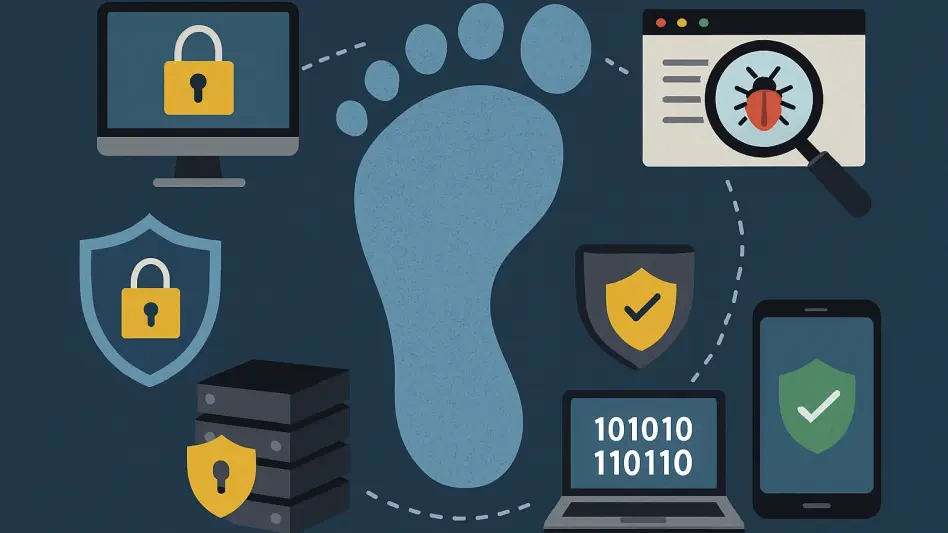The alarming rise of cyberattacks targeting vulnerable sectors like education has brought a disturbing trend into sharp focus: the increasing involvement of teenagers in major cybercrime. A recent ransomware attack on a London nursery group, where hackers accessed sensitive data of 8,000 children and demanded a hefty ransom, led to the arrest of two teenage suspects, raising critical questions about why young individuals are drawn to such criminal activities and how society can address this growing challenge. This roundup gathers opinions, tips, and perspectives from various cybersecurity experts, educators, and industry leaders to explore the factors driving teen cybercrime, the vulnerabilities it exposes, and actionable steps to curb this trend.
Unpacking the Drivers Behind Teen Involvement in Cybercrime
Insights on a High-Profile Nursery Attack
A notable case that has sparked widespread concern involves a ransomware attack on a nursery group in London, where hackers, under the alias “Radiant,” exploited personal data of thousands of children. Industry analysts highlight the audacity of the perpetrators, who attempted to extort £600,000 in Bitcoin and even posted sensitive images on the dark web to pressure the institution. The arrest of two teenagers in connection with this breach has intensified discussions about youth-driven cyber threats and their devastating impact on communities.
Cybersecurity professionals point out that the sophistication of such attacks often belies the age of the perpetrators. Many note that the accessibility of hacking tools online allows even young individuals with limited experience to cause significant harm. There is a consensus that the ethical implications of targeting vulnerable sectors like nurseries create a unique societal shock, prompting calls for deeper investigations into how such behaviors develop at an early age.
Why Educational Institutions Are Prime Targets
Experts in digital security frequently cite the education sector as a soft target for cybercriminals due to its wealth of sensitive data and often limited budgets for robust defenses. Reports indicate that children’s data, with clean credit histories, fetches high prices on the dark web, making schools and nurseries especially attractive to hackers. One widely referenced statistic reveals that over half of data breaches in UK schools involve students themselves, pointing to insider risks as a pressing concern.
Voices from the education technology field emphasize the operational challenges schools face during cyberattacks, as downtime can disrupt learning and strain resources. Some argue that the sector’s critical role in society necessitates urgent investment in cybersecurity infrastructure. Others stress that without proper training for staff and students, the risk of exploitation remains alarmingly high, calling for a multi-layered approach to protection.
The Rising Tide of Teen Cybercriminals in Global Attacks
A growing body of research and commentary highlights the surge of teenage involvement in high-profile cybercrime groups such as Scattered Spider, Lapsus$, and Shiny Hunters. Analysts note a troubling statistic: approximately one in five children aged 10-16 has engaged in some form of online offense. This trend is attributed to the ease of accessing hacking tools and the allure of quick financial gains or recognition within online communities.
Differing views emerge on whether teens are merely reckless or if systemic issues are at play. Some cybersecurity observers suggest that a lack of ethical guidance in digital spaces contributes significantly to this behavior, while others point to the role of peer influence in underground forums. There is broad agreement, however, that dismissing teen hackers as simply mischievous overlooks deeper societal gaps in education and mentorship surrounding technology use.
Psychological and Social Factors Fueling Youth Offenses
Delving into the motivations behind teen cybercrime, behavioral experts and sociologists offer varied perspectives on what drives young individuals toward such activities. Many suggest that the quest for status among peers or the thrill of exploiting tech-savvy skills can lead to misguided actions. The anonymity of the internet often emboldens teens to engage in behaviors they might avoid in real life, creating a dangerous disconnect from consequences.
Another angle of discussion centers on environmental factors like boredom or insufficient supervision, which some believe push teens into exploring dark web cultures. Educational psychologists argue that technology’s dual role as both a learning tool and a potential weapon presents unique challenges for youth, often blurring the lines between right and wrong. This complexity underscores the need for tailored interventions that address underlying emotional and social triggers.
Strategies and Solutions to Address Teen Cybercrime
Strengthening Cybersecurity in Educational Settings
Industry leaders and security consultants advocate for robust cybersecurity measures as a foundational step in protecting schools and nurseries from attacks. Recommendations include regular system updates, staff training on phishing prevention, and implementing multi-factor authentication to secure sensitive data. Some experts also suggest that government funding should prioritize digital defenses for educational institutions, given their societal importance.
Contrasting opinions exist on how to balance budget constraints with security needs. While some propose partnerships with private tech firms to provide affordable solutions, others caution against over-reliance on external vendors due to potential data privacy risks. A common thread among these insights is the urgency of creating a culture of cyber awareness within schools, ensuring that both educators and students recognize and report suspicious activities promptly.
Educating and Redirecting Tech-Savvy Youth
A frequently discussed solution involves integrating digital ethics into school curricula to guide young individuals on responsible technology use. Educators and policy advocates stress the importance of teaching students about the legal and moral consequences of cybercrime from an early age. Programs that channel tech skills into positive outlets, such as coding clubs or ethical hacking competitions, are often cited as effective ways to redirect potential offenders.
Some voices in the tech community also call for parental and community involvement in monitoring online activities and fostering open conversations about internet safety. Others highlight the role of mentorship in providing teens with role models who demonstrate the value of using digital skills for societal good. These combined efforts, many agree, can help shift the narrative from punishment to prevention, addressing root causes rather than just symptoms.
Reflecting on the Path Forward After Eye-Opening Discussions
Looking back on the diverse insights gathered, it becomes clear that the involvement of teenagers in major cybercrimes, such as the London nursery attack, exposes critical vulnerabilities in both technology and societal structures. The discussions underscored the urgent need for fortified defenses in education and a deeper understanding of youth motivations. Moving forward, stakeholders must prioritize actionable steps like enhancing school cybersecurity, embedding ethical digital education, and creating positive pathways for tech-savvy teens. Exploring innovative programs and policies that address these issues head-on will be crucial, as will continued dialogue among experts, educators, and communities to ensure a safer digital landscape for future generations.








